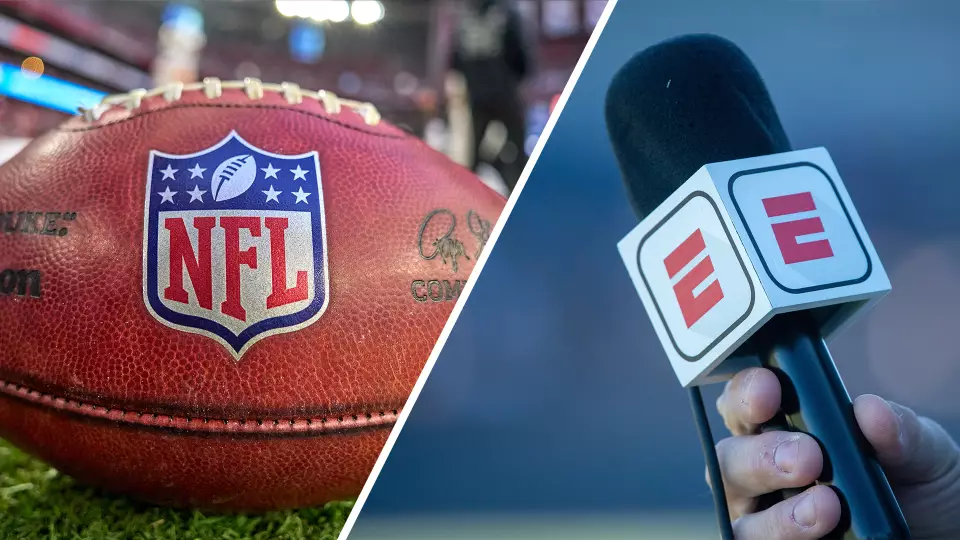The recent strategic move by ESPN to acquire the NFL Network and related media assets marks a pivotal shift in the landscape of sports broadcasting. Instead of remaining a traditional spectator in the game, ESPN takes a commanding stance, positioning itself as the primary conduit through which millions of fans will access football content. This deal signifies more than just ownership transfer; it reflects a calculated effort by ESPN to solidify its dominance and adapt to the rapidly evolving digital consumption patterns of modern sports fans. With the NFL’s backing and a 10% equity stake, ESPN is not merely expanding its portfolio—it’s embedding itself deeply into the very fabric of professional football’s media ecosystem.
This move allows ESPN to control the narrative, the presentation, and the delivery of NFL content, including the iconic RedZone channel. The significance lies in the strategic control of distribution rights, digital integration, and content licensing. Such consolidation suggests that ESPN recognizes the future belongs to multi-platform engagement over traditional linear broadcasting. The boldness of this acquisition is evident—it positions ESPN as not just a sports broadcaster but as an immersive football experience hub, capable of competing with emerging streaming giants and tech-driven platforms.
Innovating with Content and Fan Engagement
One of the most transformative elements of this deal involves ESPN’s integration of the NFL’s fantasy football product. By merging it into its existing platform, ESPN transforms fantasy football from a peripheral pastime into an official NFL engagement tool. This move caters to a core demographic—tech-savvy, stats-driven fans—who live and breathe football statistics, trades, and game analysis. It indicates ESPN’s acknowledgment that engagement extends beyond just watching games; it encompasses interactive, personalized experiences that keep fans tethered to the sport year-round.
Furthermore, the licensing of additional NFL games expands ESPN’s game slate, elevating its position in live sports broadcasting. Although specific game schedules are yet to be announced, the prospect of 28 NFL games on ESPN’s linear, digital, and direct-to-consumer platforms suggests a recalibrated competitive balance with other broadcasters and streaming services. This diversification ensures that ESPN not only retains its traditional audience but also attracts a new, digitally inclined demographic eager for on-demand, versatile viewing options.
Another salient feature is the preserved rights to the NFL’s flagship RedZone channel. By owning the trademark and distributing it to pay TV operators, ESPN cements its hold over a product synonymous with real-time, high-intensity football coverage. Meanwhile, the league retains control over digital distribution, preserving a balance that maximizes revenue streams for both parties. It’s a nuanced approach that maintains the strength of traditional broadcasting while innovating in the digital space.
Implications for Fans and the Future of Sports Consumption
The merger and licensing agreements signal a future where the traditional boundaries of sports media blur. The NFL’s partnership with ESPN aims to create a seamless, all-encompassing viewing experience—one where fans can access content anytime, anywhere. ESPN’s forthcoming direct-to-consumer streaming service is at the heart of this vision. Promising to offer ESPN’s linear networks along with a plethora of other streaming options, this platform symbolizes a strategic pivot that embraces the consumer’s desire for flexibility and control.
What’s remarkable is ESPN’s clear commitment to maintaining traditional broadcast avenues while simultaneously pioneering digital innovation. This dual approach ensures broad accessibility and caters to fans who prefer television, as well as those who favor mobile, online, and personalized streams. The strategy underscores a forward-thinking mindset that sees the future of sports media as a hybrid — blending legacy networks with cutting-edge digital services.
However, critics might argue that this concentration of media rights under ESPN could limit competition, potentially creating a monopolistic environment for NFL coverage. Yet, from a strategic standpoint, ESPN’s dominance ensures a consistent, high-quality delivery of NFL content, aligning with their broader goal of being the definitive sports media platform. For fans, it could mean less fragmentation but also raises questions about diversity of voices and perspectives within NFL coverage.
ESPN’s aggressive acquisition and integration of NFL media assets exemplify a broader industry trend—Sports media companies are not content to be passive distributors; instead, they aim to shape the future consumer experience. For the NFL, partnering with a media giant like ESPN offers unprecedented opportunities for innovation and reach. For ESPN, it’s a gamble that could redefine its identity—from a traditional sports network to an omnipresent football ecosystem that keeps fans connected, engaged, and craving more.

